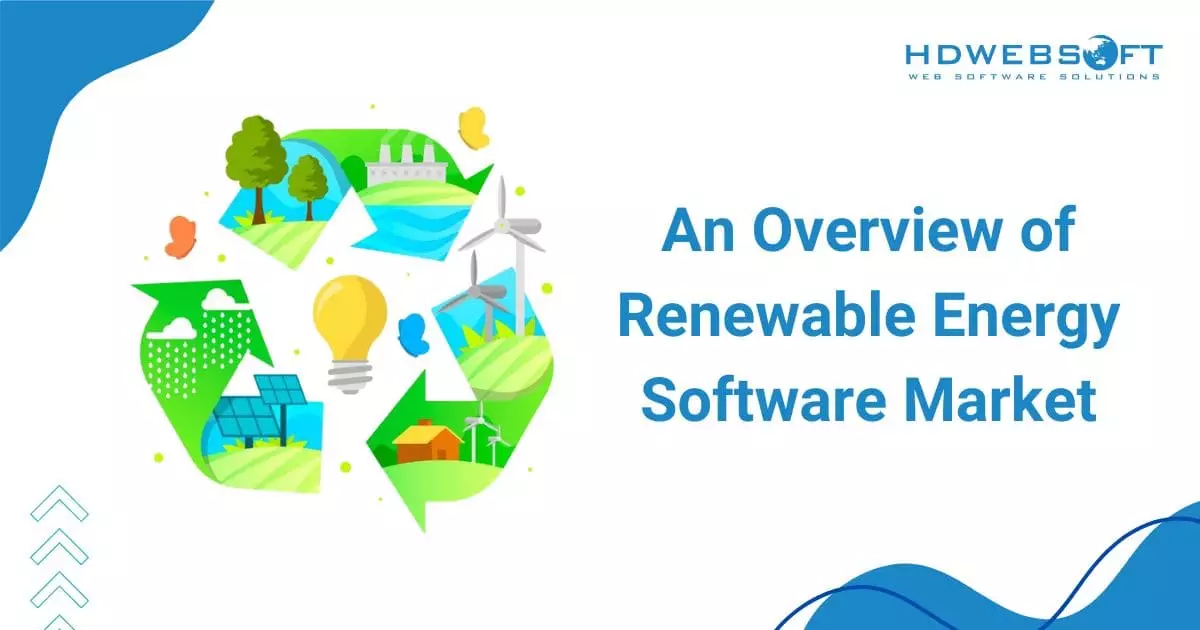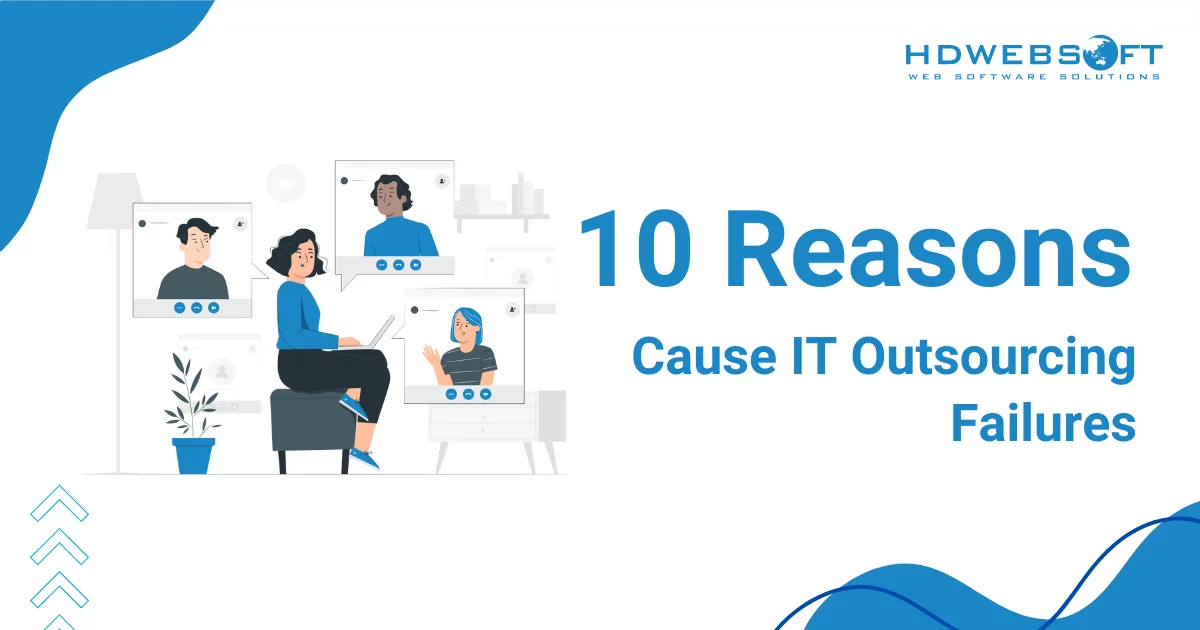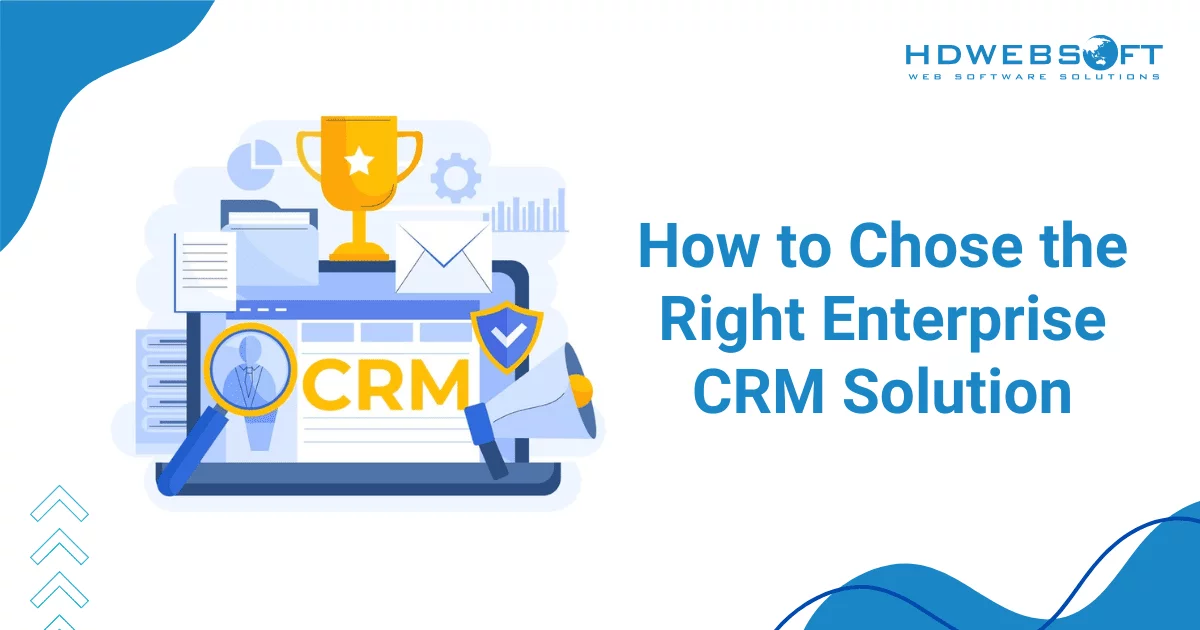
Renewable Energy Software for A Better Sustainability
Renewable energy software is at the forefront of the growing green energy market. This industry is anticipated to expand at an annual rate of 4.22% through 2029. Consequently, it’s spurring new green energy initiatives and attracting significant investments, even amidst a global decline in startup funding.
If contributing to a sustainable future is your goal, you’re in the right place. In this post, we’ll dive into the various types of renewable energy software and spotlight essential features. While we’re at it, we’ll also introduce a set of innovative technologies that are revolutionizing the development of sustainable software.
An Overview of Renewable Energy Software Market

According to a report, venture capital funding for clean energy startups has seen a 6% dip compared to previous years. This drop is largely due to the surge in AI startups, which have captured most capital, diverting attention from climate-tech solutions.
Even so, it’s not the moment to lose hope. Despite these challenges, the clean energy sector continues to hold its ground. It remains resilient compared to other startup industries, which inflation, higher interest rates, and economic uncertainty have impacted.
Let’s take a closer look at which categories of climate-tech startups are currently attracting the most funding.
Battery Storage
One challenge with renewable energy sources is their inability to produce power around the clock. Since the efficiency of solar panels and wind turbines relies heavily on weather conditions, companies are turning to innovative technologies to address this issue. That is the reason why battery storage technologies are leading the way in climate tech investments.
These systems allow surplus energy from renewable sources like solar and wind to be stored and used when needed. This explains the 8% increase in investment in battery technology and storage solutions last year. Moreover, it underscores the growing need for innovative approaches to improve energy storage in the sector.
Hydrogen as a Clean Energy
Next, hydrogen is also gaining traction. It’s a clean energy source that can decarbonize hard-to-abate industries like steel production and long-haul transportation. When produced using renewable energy, green hydrogen becomes a powerful tool for reducing emissions.

This kind of climate tech is gaining a lot of attention lately
Hydrogen-focused startups are seeing steady growth, with approximately 24 companies successfully securing over $1.4 billion in equity funding. Additionally, integrating renewable energy software with hydrogen production systems ensures smooth monitoring and optimization of energy inputs. In the long run, the overall efficiency will be boosted.
Energy Production Monitoring
Efficient energy production monitoring is critical for maximizing renewable energy output. Advanced tools powered by renewable energy technologies help track system performance, predict maintenance needs, and optimize energy generation. Additionally, these tools leverage real-time data and machine learning algorithms to improve decision-making and reduce downtime.
Furthermore, they ensure compliance with regulatory standards, which is vital for securing funding and scaling operations. With the growing focus on operational excellence, energy production monitoring is attracting significant attention from investors.
Renewable Energy
The backbone of climate tech funding lies in renewable energy systems. Solar, wind, and hydro technologies serve as key drivers in the global transition to sustainable power. Investment in clean energy soared to $2 trillion in 2024, according to a recent report.
Furthermore, the integration of renewable energy software is enabling companies to harness the full potential of these energy sources. By optimizing production, managing distribution, and ensuring grid stability, this software makes renewables more viable and attractive for large-scale adoption.
Renewable Energy Software Benefits
The adoption of clean energy software is revolutionizing the way businesses and organizations manage energy systems. By offering tailored solutions to maximize energy use, reduce costs, and enhance decision-making, this kind of software is becoming indispensable. Let’s explore its key benefits:
Increased Energy Efficiency
One of the most significant advantages of alternative energy software is its ability to enhance energy efficiency. Through the use of real-time data and advanced algorithms, it optimizes energy generation and distribution. As a result, it’ll make sure no resources are wasted.
For example, solar panels or wind turbines can be adjusted automatically based on weather conditions to achieve maximum output. In addition, these tools identify inefficiencies early, preventing performance losses and ensuring peak operation.
Cost Saving
Managing renewable energy systems effectively can significantly reduce costs, and renewable energy software is at the forefront of this transformation. By automating processes like energy distribution and maintenance scheduling, businesses can cut down on manual labor and operational inefficiencies.
A good example that we can mention is predictive analysis for maintenance. Its capabilities help detect potential issues before they escalate into costly repairs. Moreover, the optimization of energy consumption translates into lower energy bills, allowing organizations to allocate their resources better.
Monitoring Green Energy Production
Efficient monitoring is important for renewable energy systems to perform at their best. With clean energy technology solutions, companies can track energy production in real-time, ensuring optimal performance. Particularly, this is useful for large-scale operations where keeping an eye on multiple installations can be challenging.
What’s more, monitoring tools provide detailed insights into how much green energy is being produced, consumed, and stored. Overall, it’ll provide you with a comprehensive view of the system’s health and efficiency.

With renewable energy software, energy production can be easily monitored.
Insightful Analytics
Data is a goldmine in the energy sector, and renewable energy software provides powerful analytics to make sense of it. These insights help organizations identify trends, forecast energy demand, and plan better. To illustrate, data analytics tools can determine the best times to store or use energy, maximizing efficiency and profitability.
Moreover, detailed reports enable better communication with investors and stakeholders, fostering trust and transparency.
Sustainability and Regulatory Compliance Tracking
Sustainability is at the core of renewable energy efforts, and adhering to strict regulatory requirements is non-negotiable. Alternative energy solutions simplify compliance by automating reporting processes and ensuring adherence to environmental standards. Thus, the risk of non-compliance penalties can be reduced significantly.
In addition, the software tracks sustainability goals, helping businesses showcase their environmental contributions and enhance their reputation among stakeholders.
Scalability
As businesses grow, their energy needs evolve. One of the standout benefits of renewable energy software is its scalability. Whether you’re managing a single solar farm or multiple wind installations across regions, the software can adapt to your needs. Besides, it integrates effortlessly with emerging technologies like energy storage systems or green hydrogen.
It’s safe to say that you can expect future readiness.
What Features to Look for in a Utility Software Solution
With so many options available, selecting the right software can be challenging. To make an informed decision, you should focus on solutions that offer these necessary features:
A Centralized Dashboard
A user-friendly, centralized dashboard is a must-have feature in renewable energy software. For starters, it consolidates data from various energy systems into one accessible interface, enabling frictionless monitoring.
Whether you’re tracking solar panels, wind turbines, or energy storage systems, a centralized dashboard provides a holistic view of energy consumption and production. Likewise, it allows stakeholders to monitor KPIs in real time, making it easier to identify trends and address issues quickly.
Utility Tracking
Now, utility tracking capabilities are essential for keeping tabs on energy usage and costs. The best utility software can analyze utility bills and provide insights into energy consumption patterns, helping businesses identify areas for cost savings.
Additionally, this feature allows users to compare energy usage across different sites or installations, ensuring optimal performance. By staying on top of utility data, organizations can make smarter decisions about resource allocation and sustainability strategies.
Detailed Reporting
Comprehensive reporting tools are a cornerstone of any effective renewable energy software. These tools generate detailed reports on energy production, consumption, and efficiency, offering valuable insights for stakeholders. Reports can be customized to suit various needs, whether tracking sustainability goals, preparing for audits, or presenting data to investors.
On top of that, detailed reporting ensures transparency, which is crucial for building trust with stakeholders and regulatory bodies.

Renewable energy software can generate detailed reports using real-time data.
Predictive Maintenance and Troubleshooting
One of the standout features of advanced clean energy technology solutions is its predictive maintenance capabilities. By analyzing real-time data and historical performance trends, the software can anticipate potential issues before they escalate into costly repairs or downtime.
Together with predictive analysis, troubleshooting features help quickly diagnose and resolve problems, ensuring uninterrupted energy production. This not only saves money but also extends the lifespan of renewable energy assets.
Grid Integration Capabilities
Lastly, grid integration is a critical aspect of renewable energy management, and your software should excel in this area. Renewable energy software with robust grid integration capabilities ensures an effortless connection between renewable systems and the existing power grid. Hence, this allows energy producers to sell surplus energy back to the grid or balance supply and demand effectively.
To boost, grid integration features often include tools for real-time energy dispatching and compliance with grid standards. Therefore, it’s easier for businesses to manage complex energy networks. In the real estate sector, this ensures that properties utilizing renewable energy systems can efficiently balance supply and demand, providing uninterrupted energy to tenants while reducing operational costs.
Innovative Technologies for Renewable Energy Software Development
As the renewable energy sector grows, the need for advanced solutions to manage, optimize, and scale operations becomes increasingly vital. Here’s a closer look at some of the cutting-edge technologies driving progress in this field:
The Internet of Things (IoT)
Revolutionizing the way we interact with renewable energy systems, the Internet of Things plays a key role in this transformation. IoT devices are embedded in renewable energy assets to gather real-time data on performance, weather conditions, and energy output. Then, this data is transmitted to renewable energy software, enabling smarter decision-making and immediate responses to anomalies.
As expected, IoT enables remote monitoring and control of energy installations. Owing to this, we can reduce the need for on-site interventions and improve operational efficiency.
Smart Grid Technology
The major leap forward in energy distribution and management stands for smart grid technology. By integrating alternative energy software with this technology, energy producers can dynamically balance supply and demand while minimizing energy losses.
Expectantly, smart grids facilitate the effortless integration of renewable energy sources into the traditional power grid, ensuring stability and reliability. They also enable two-way communication between energy producers and consumers, fostering a more interactive and efficient energy ecosystem.

With the ability to integrate the grid, renewable energy software serves as a connection between providers and consumers.
Blockchain
Emerging as a game-changer in the renewable energy sector, blockchain technology enables secure and transparent energy transactions. It allows individuals and organizations to trade surplus energy directly with one another.
Renewable energy software powered by blockchain can track energy generation and consumption with unparalleled accuracy. They’ll make sure that renewable energy credits are fairly distributed. Moreover, blockchain facilitates peer-to-peer energy sharing, empowering communities to create localized energy markets.
Further Reading: Blockchain in Finance: A New Era for BFSI.
Artificial Intelligence and Machine Learning
AI and ML are becoming indispensable tools in renewable energy management. These technologies allow for predictive energy demand, optimized energy production, and identified maintenance needs before they escalate into costly problems.
For instance, ML algorithms can analyze weather patterns to forecast solar or wind energy output, ensuring better resource planning. In addition, AI-driven tools help improve grid stability by automating energy distribution and load balancing, making renewable systems more reliable.
Energy Storage Systems
Efficient energy storage is crucial for overcoming the intermittency of renewable energy sources. Modern renewable energy software incorporates energy storage solutions, such as advanced batteries, to store surplus energy for later use. What’s more, these systems are often powered by smart algorithms that decide when to store or release energy based on real-time demand and pricing.
Advanced Analytics
Data analytics plays a vital role in optimizing renewable energy systems. Advanced analytics tools provide actionable insights into energy production, consumption patterns, and system performance. With their ability to process vast amounts of data in real time, these tools empower organizations to make informed decisions. As a result, they can maximize efficiency and minimize costs effectively.
Conclusion
The journey towards a greener and more sustainable planet hinges on the smart adoption of renewable energy technologies. Renewable energy software plays a pivotal role in this transformation, providing the tools needed to optimize, monitor, and grow renewable energy systems effectively.
With the market booming and technological advancements breaking new ground, there has never been a better time to invest in these solutions. By choosing software with the right features and innovative capabilities, businesses and utilities can ensure their place at the forefront of the renewable revolution.









